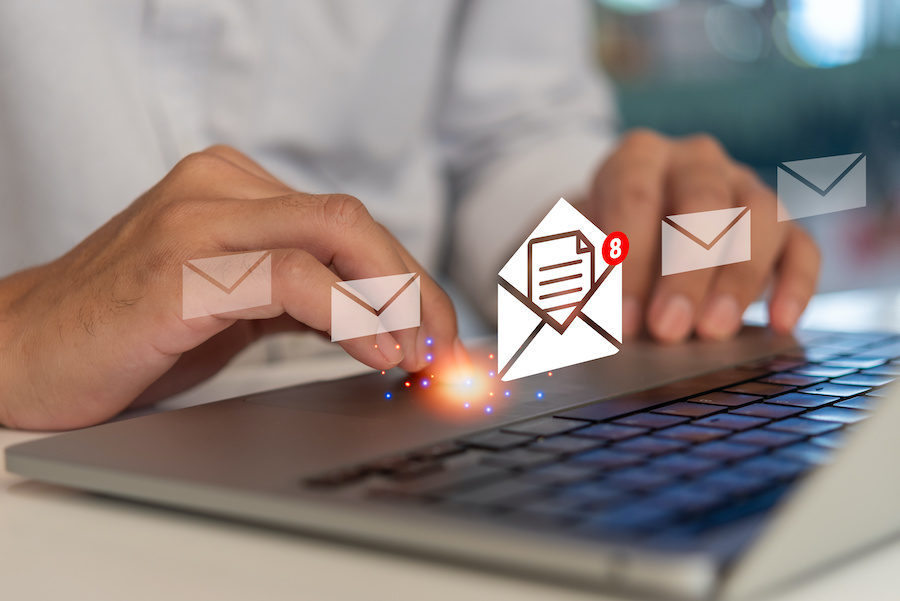Creating Effective Media Alerts
By Tom Anderson
September 2023
In the 12 years that I’ve owned and managed a public relations and marketing agency, I’ve found that a few crucial elements help secure media coverage for a client’s public announcement — whether you call it a press release, news statement or media alert.
Limit press release to one page
Newsrooms sometimes receive hundreds of press releases a day. The longer and more complicated a press release is, the more likely that reporters will skim, disregard or delete it. It’s best to limit press releases to one page: a few paragraphs of relevant details, concise contact information and links to websites or videos.
Write captivating subject lines, headlines
Emails with long subject lines can send a media alert straight into the reporter’s spam folder. Email subject lines should be short, unique and attractive. For the media alert itself, a clear, concise headline that tells the recipient something new will have the most impact.
Include news, quotes, background
In the first paragraph of a press release, my preference is to explain what’s being announced, so the purpose of the message is clear. In the second paragraph, I’ll add a quote related to the subject. In the third paragraph, it’s essential to provide background on the company that’s sending the release. This approach makes it easier for reporters to cover the story.
Time your media alert
Reporters tend to be inundated with messages on Monday mornings. On Fridays, like most of us, they’re eager to leave the office and start their weekends. The chances of your story being picked up increase when the media alert is emailed between 5 a.m. and 8 a.m. on a Tuesday, Wednesday or Thursday, just before the reporters go into their editorial meetings.
When possible, send a personalized pitch
In my view, press release platforms and newswire services are overrated, inefficient and expensive. I have asked many reporters and editors about their preferences for receiving press releases. They've told me they prefer a direct email from someone they know, rather than a press release that's blind-carbon-copied (Bcc'd) or comes from a newswire.
Target relevant media
Clients like to see positive coverage of their stories in the news media, and for many PR people, media coverage equals success. But today, media goes beyond traditional news outlets to also include bloggers, YouTube personalities and social media influencers. In this new environment, it’s best to send media alerts to recipients who will reach the client's intended audiences.
Decide who’s contact information to list
Some PR professionals will list the client’s phone and email contact information at the bottom of a press release. But clients are busy and might not have time to respond to the media or be savvy about communication. Press releases often contain time-sensitive information; we don’t want to make a reporter wait for answers if the client can’t or doesn’t take a call.
A PR counselor who issues a media alert should list its own contact information at the bottom and assign a reliable staff member to receive press inquiries and then communicate with the client. Clients should also be briefed in advance about when a press release will be distributed, so they’re available the entire day and can respond to media queries.
More often than not, prompt communication between the PR firm and the client is what compels media coverage. If a client prefers to list itself as the contact on a press release (something we often experience with nonprofit and political clients), it’s best to make sure they have received agreed-upon talking points and will relay any press calls they receive from media alerts back to the PR team. That way, everyone is on the same page and the PR firm can monitor the resulting coverage.
Monitor coverage
An efficient, free way to monitor the news coverage you receive from your press releases is by signing up for Google Alerts. As long as you have a Google account, you can create alerts for any topic, such as your client's name, the subject matter of your press release or any related words or phrases. When one of those search terms appears somewhere online, you will receive an email from Google.
Granted, some media such as small local radio stations, social media posts and podcasts might not be captured by Google Alerts. And sometimes you will receive alerts for unrelated news items that share some of the same words or phrases as the alerts you have created. But TV stations, newspapers and magazines that cover your announcements will generally also post those stories online, so you will receive alerts for those media results.
If a journalist doesn’t cover the information you’ve sent in a press release, you can always give that reporter a gentle nudge. I’ve done this many times and found that after taking another look, the reporter decides to cover the story.
When a press release that we issue results in media coverage (or if it gets a response from a civic or government organization), we let the client know. But since media coverage can occur over a period of days or weeks, rather than all on the same day, I prefer to keep monitoring the results (and nudging reporters) and then to give the client periodic updates.
Also, once a press release has been issued, it can be added to the client’s website and linked on its social media accounts. We also keep a copy of the press release in a PDF format to include in our firm's portfolio, along with links to any news coverage that we achieved.
A good PR counselor should be able to craft a compelling media alert for its clients, ensure the release is delivered to the appropriate recipients and at minimum, achieve some level of demonstrable coverage or response. The client deserves nothing less.



